Snake Bite First Aid Tips
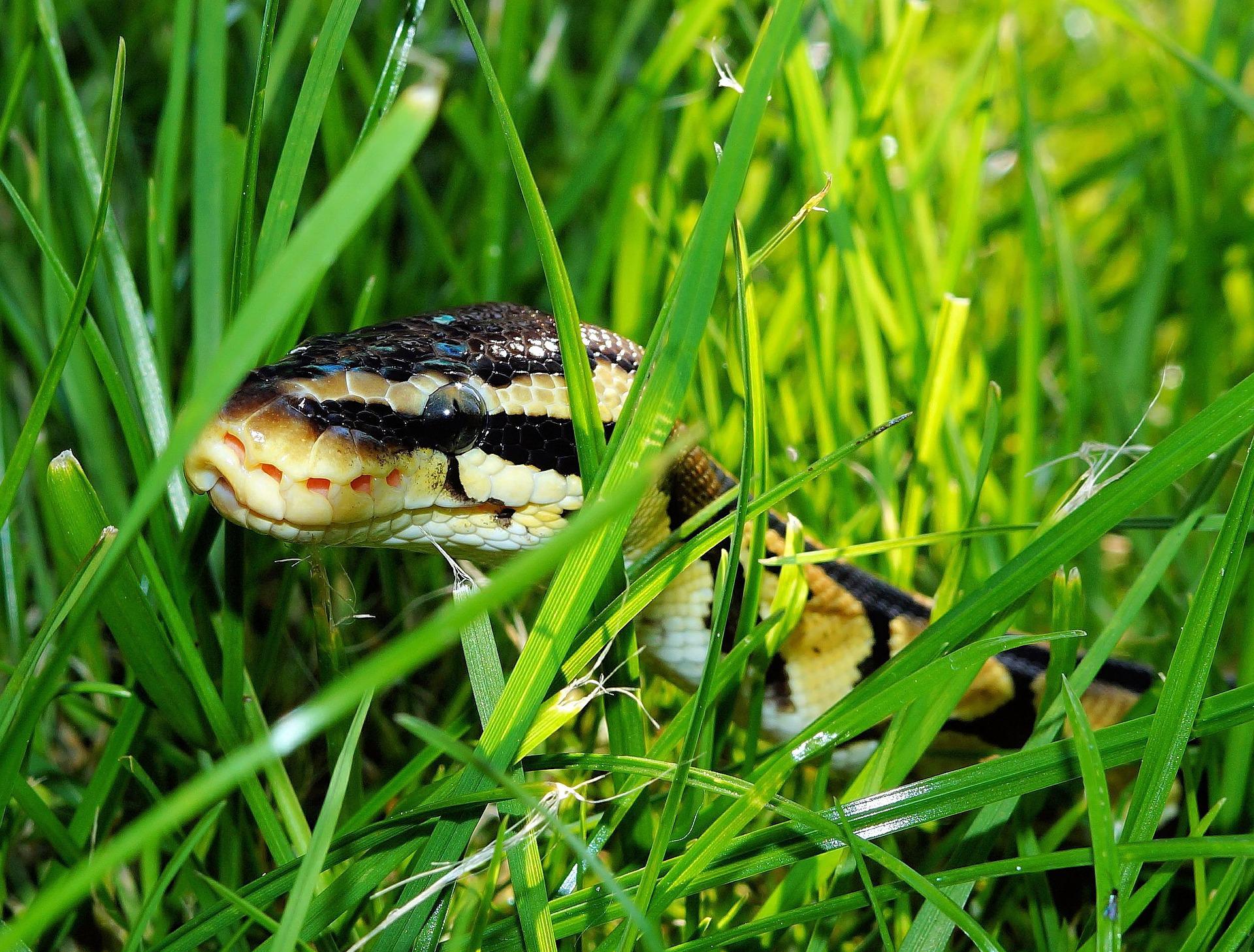
Each year, around 3000 people are bitten by snakes. One of Australia’s most renowned native animals is the deadly brown snake. The venomous reptile is one of many lethal creatures that inhabit our contrasting landscapes but it is certainly the most frequently encountered. The brown snake has made headlines for making an out-of-season appearance across Australia. Brown snakes can be found all across Australia which is why every Australian should know how to provide snake bite First Aid.
More snakes have been spotted in gardens and vegetation as people stay and work at home. Abundant grass growth also makes for an attractive environment for snakes. Snakes will become more active as the weather starts to warm up in spring and summer.
There are up to 100 species of venomous snakes throughout Australia that have the ability to cause moderate to severe symptoms from a snake bite. Because of this, all snakebites must be treated seriously. With Australian snake season making an early debut it’s important that if you’re planning an outdoor adventure or live in a snake prone area you are equipped and have the knowledge to provide snake bite First Aid if the need arises.
Types of Snake Bites
Venomous Snake Bites
The brown snake is the most well-known and commonly sighted snake in Australia. However, it is just one of 10 highly dangerous snakes which live across the nation. Other deadly Australian snakes include the Taipan, Tiger Snake, Death Adder, Copperhead, Mulga Snake and Small-eyed Snake.
It is unreasonable to expect every person to be able to identify every type of snake that lives in Australia. Because of this, whenever a snake strikes the bite should always be treated seriously.
Even if it is not clear whether or not the snake successfully released venom you must always treat the snake bite seriously as snake bites in Australia can be fatal.
Dry Snake Bites
Evidence shows that venom is not successfully released in more than 90% of incidents when a person is bitten by a snake. This is known as a ‘dry bite’. Although no venom is injected dry bites are still painful and will cause swelling and redness in the area the bite occurred.
As you can never be certain that a snake has not released its venom you must always treat a snake bite as if venom has been injected.
What Happens When a Snake Bites
When a snake successfully injects venom through a bite, it will travel through the lymphatic system to the bloodstream. From here it can have serious consequences on the nerves and muscles which can then cause paralysis.
If a person collapses from a snakebite and does not seem to be breathing you must immediately provide CPR.
- Roll them onto their back
- Check there is nothing in their mouth and the airway is clear
- Apply 30 compressions
- Provide 2 breaths
- Repeat compressions and breaths at a rate of 30:2 until help arrives or the casualty starts breathing
Signs and Symptoms
Snakebites do not always cause visible signs and symptoms. The onset of symptoms may also be delayed so if a snake bite occurs always seek medical assistance.
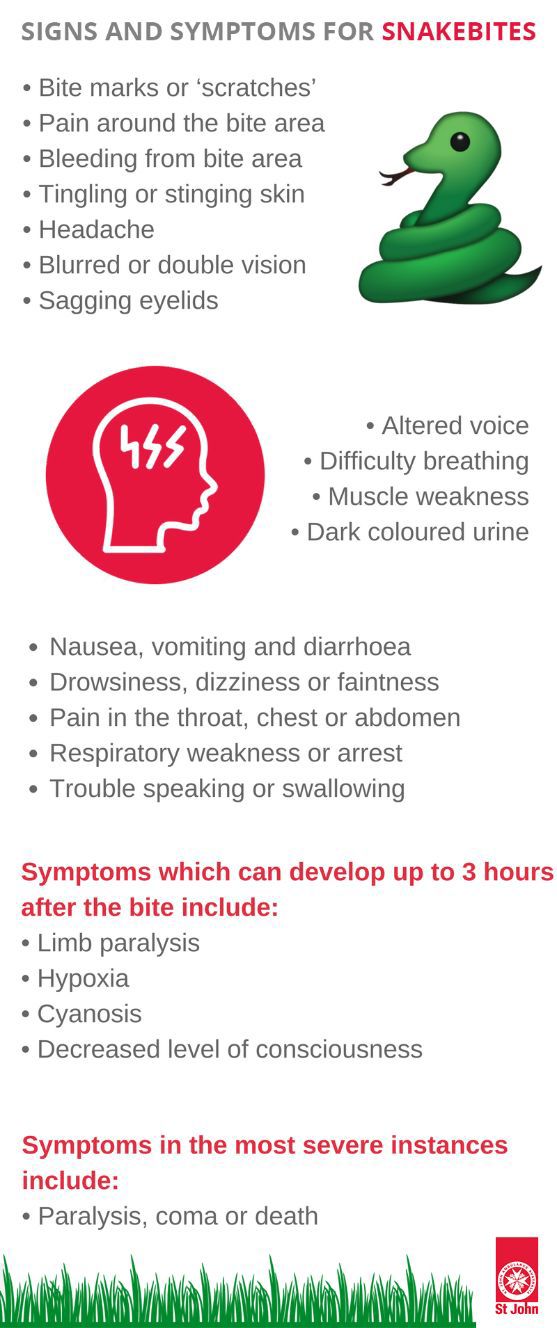
Snakebite Management
1. Follow DRSABCD
2. Lay the casualty down and provide reassurance
3. Apply a pressure immobilisation bandage:
- Wrap a broad pressure bandage around the bite as soon as possible
- Apply a firm heavy elasticised roller bandage just above the fingers or toes and work your way upwards on the limb. Wrap the bandage past the snakebite and as far up the limb as possible
- Ensure the bandage is applied firmly without hindering blood circulation
4. Splint the bandaged limb
5. Ensure the patient remains still
6. Call triple zero (000) for medical assistance
7. Record the time the bite occurred and when the bandage was applied
8. Wait with the casualty, monitor and record any changes in their condition
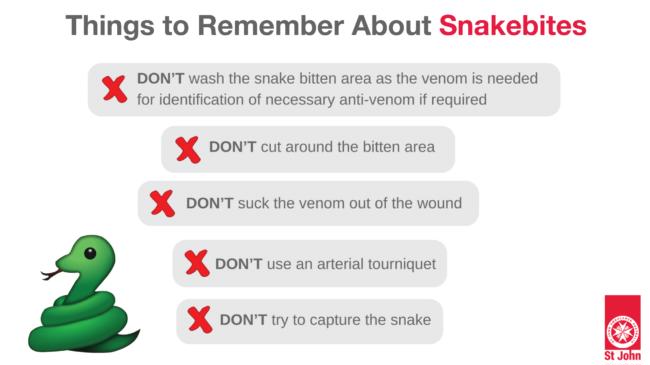
How To Avoid Being Bitten By A Snake
- Always be aware of your environment
- Do not try to handle or kill a snake if you are not a professional
- Wear long pants and covered shoes if walking in bushland, long grass, remote areas or gardening
- Block off any entry points into the house (snakes like cold bathroom tiles to cool down)
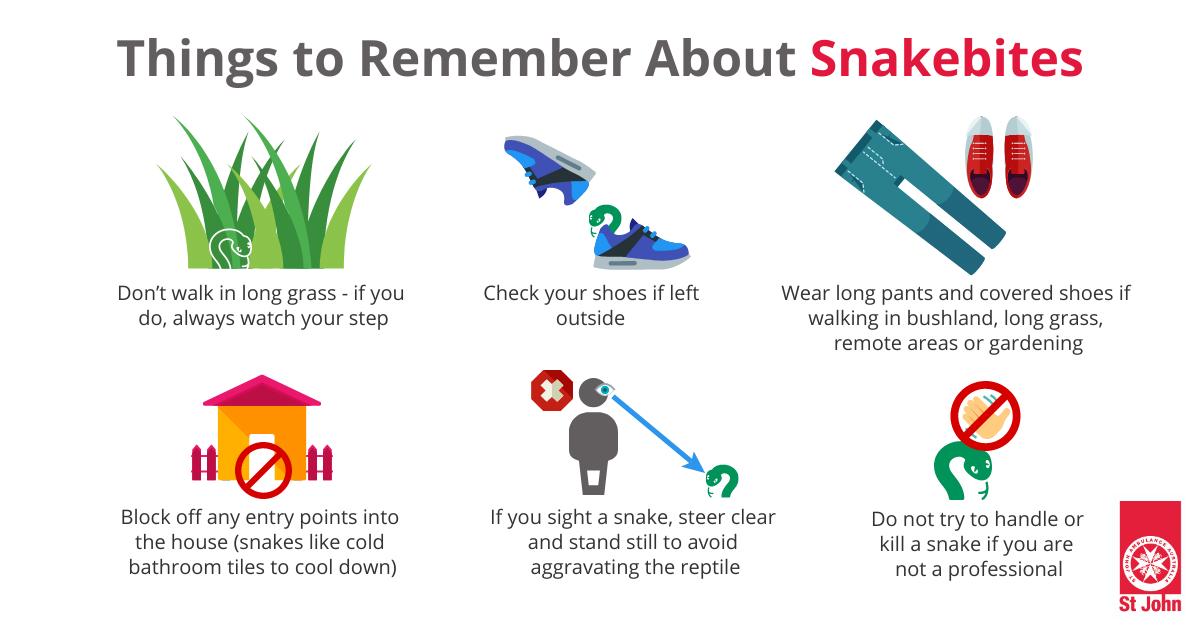
Throughout snake season you must always be aware of your surroundings – don’t walk in long grass, check your shoes if left outside and always look when walking through shrubbery. Snakes generally only bite humans if they are provoked, so if you sight a snake, steer clear and stand still to avoid aggravating the reptile.
Snake bites can be distressing if you are not prepared or are not confident in providing snake bite First Aid. Although some of the most poisonous snakes in the world inhabit Australia’s backyard, it’s important to remember that dying from a snake bite is extremely rare so always remain calm and provide reassurance to the casualty.
By following our snake bite First Aid tips and keeping a Snakebite First Aid kit handy, you can guarantee this season you will be ready if a snake strikes.
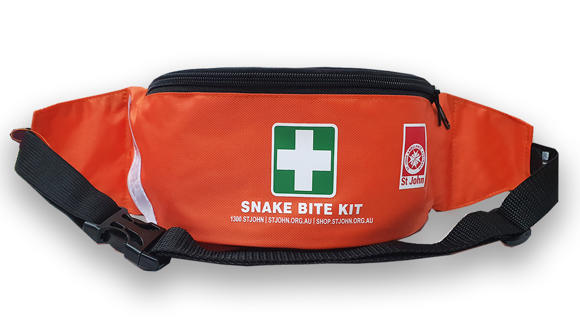
Snake Bite Kit Bum Bag
Personal sized snakebite bumbag first aid kit with adjustable woven strap. The clasp is attached to an elastised loop giving additional stretch to secure the bag.
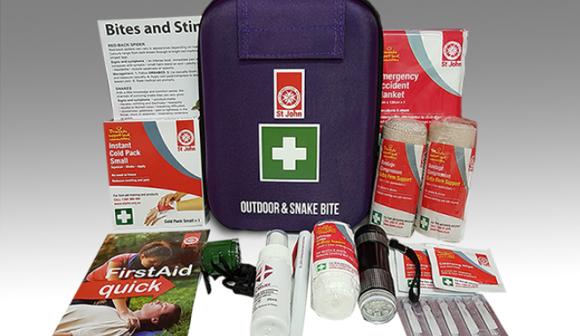
Outdoor and Snake Bite First Aid Module
Easy to carry and assists the First Aider in treating everything from a Bee sting to Snake Bite.
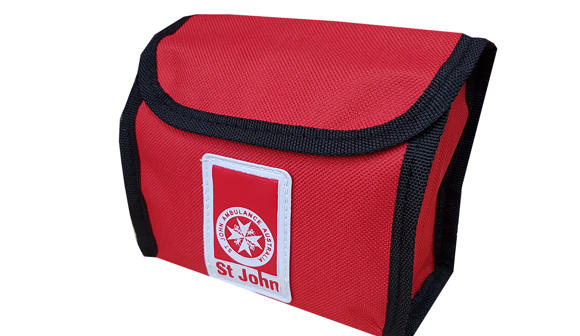
Snake Bite First Aid Kit
Personal sized snakebite kit with velcro strips to attach to belt or backpack.
